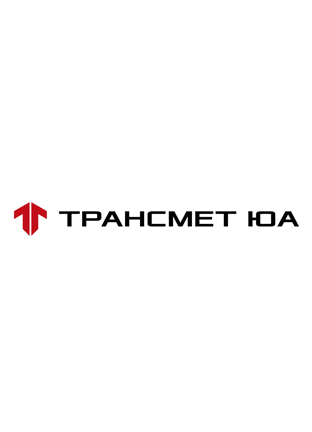seo
Довірся нам і ми все зробимо за тебеSEO-просування сайту ключ для збільшення продажів
Чому SEO-просування від Star Up Group - гарантія успіху вашого бізнесу? Сутність, переваги та можливості
SEO (Search Engine Optimization) це ключова складова маркетингового просування спрямована на підвищення позицій сайту в пошуковій видачі. Чим більше користувачів бачать сайт та переходять на нього, тим більше можливостей продавати необхідні товари чи надавати послуги.
seo
Ефективна стратегія SEO-просування від Star UP базується на індивідуальному аналізі проєкту, Попередньому вивченню особливостей роботи і бажаних цілей
Навіщо бізнесу замовляти SEO-просування? SEO-просування - це ключ до вашого успіху
отримання органічного трафіку з пошукових систем
інформування цільової аудиторії про діяльність бізнесу, продукти, які пропонуються
виграшні позиції серед інших конкурентів у цьому напрямку;
висока конверсія сайту та збільшення кількості цільових дій, виконаних користувачами
Етапи SEO-просування для бізнесу SEO-просування для бізнесу не таке просте як здається на перший погляд
Загальний процес SEO-просування для бізнесу виглядає просто. Але насправді він складається з кількох складних етапів і наша команда займається послідовним налаштуванням вказаних етапів для доведення роботи до логічного результату.

Аналіз ринку та конкурентів
Аналіз ринку та конкурентів
Розуміння цільової аудиторії та конкурентів допоможе ефективно оптимізувати сайт для пошукових систем та донести перевагу бізнесу до аудиторії. Використовуються спеціальні професійні інструменти Serpstat та Similarweb, а також широкий спектр методик аналізу ринку.

Складання семантичного ядра
Складання семантичного ядра
Аналіз релевантних запитів для вашого бізнесу - основа якісної оптимізації. На базі семантичного ядра формується контент-план, структура сайту та розширення посадкових сторінок, які можуть бути корисні для аудиторії. Окрім того це дозволяє оцінити потенціал трафіку з пошукових систем.

Site structure development
Site structure development
Кластеризація ключових слів, які будуть розміщені на певних сторінках, у розділах та підрозділах сайту.

Наповнення контентом
Наповнення контентом
Інтернет-ресурс створюється не для роботів. Тому сторінки не просто складаються з рандомних ключових фраз, а мають наповнюватися цікавим спеціалізованим контентом.

Внутрішнє перелінкування
Внутрішнє перелінкування
Створення внутрішньої перелінковки сайту, за допомогою якої користувач та пошукові роботи мають змогу зручно переходити між найважливішими сторінками та розділами сайту. Є невід’ємною частиною внутрішньої оптимізації.

External optimization
External optimization
Накопичення маси посилань на сайтах-донорах, з яких цільова аудиторія буде переходити на сайт, що просувається. Однак посилання мають бути авторитетними, релевантними, із вказанням першоджерела.
Переваги експертного SEO-просування Тільки для професіоналів своєї справи та досвідчених фахівців
Адаптація роботи залежно від специфіки сайту
індивідуальні рішення розробляються під самописні сайти, ресурси, зроблені у конструкторах або на базі популярних CMS-систем (Opencart, Horoshop, Wordpress)
Врахування особливостей B2B-ринку
Оптимізація сайту з урахуванням специфіки поведінки та шляху залучення аудиторії на ринку B2B.
Досвід роботи зі складними товарами
розробка ланцюжка, який допоможе продати клієнту навіть професійні технологічні рішення
Виведення нових лінійок
просування з нуля рішень, які невідомі цільовій аудиторії, потребують детального тлумачення особливостей роботи
Легальність
офіційне співробітництво, оформлення всіх необхідних паперів відповідно до українського законодавства
Звітність
замовник може в будь-який момент запросити звіт про роботу та отримати розгорнуту інформацію, статистичні дані
Попереднє планування
аналіз сайту та конкурентів для виявлення проблемних точок, моментів, які потребують покращення
Зрозумілість
використання зрозумілих показників ефективності (KPI), які наочно продемонструють клієнту результат роботи
Універсальність
наша команда працює не лише з пошуковими системами, але й із соціальними мережами (SMM), контекстною рекламою, іншими каналами просування.
steps
Ми надаємо послуги "під ключ". Беремо на себе зобов’язання щодо аналізу сайту, підготовки плану та реалізації запланованого. Замовник отримує готове ефективне рішення, яке не потребує додаткових фінансових або часових інвестицій.
Показники для оцінки результатів Ефективність SEO-просування аналізуємо на основі наступних показників
Замовник може запросити інші статистичні показники, які потрібні йому для оцінки якості проведеної роботи, але основні з них наведенні нижче.

отриманий органічний трафік

конверсія та продажі від користувачів, які перейшли з видачі

кількість відмов від цільової дії

середній час перебування на сайті

позиція ключових слів у видачі
Напрямки, в яких ми працюємо Наш досвід допомагає надавати ефективні послуги SEO-просування в наступних сферах
Допомагаємо запустити нові продукти – стартапи, нові лінійки продукції, які вимагають детального роз’яснення функціональності та необхідності для цільової аудиторії

B2B
B2B
сектор електрообладнання, будівельних матеріалів, металопрокату

e-com проєкти
e-com проєкти
Оптимізація як монобрендових фірмових інтернет-магазинів, так і великих мультибрендових майданчиків з широким асортиментом.

складні технічні товари
складні технічні товари
Специфічні товари та послуги, які мають довгий цикл прийняття рішення про покупку, потребують детального аналізу ринку та аудиторії, а також мають низьку обізнаність на ринку.

Блоги/Інтернет ЗМІ
Блоги/Інтернет ЗМІ
SEO оптимізація блогів та інформаційних порталів, створення та реалізація контент-стратегій.
Price
Ціна наших послуг попередньо розраховується для кожного клієнта. Враховуються складність проєкту, перелік необхідних робіт.
Що таке рекламне агентство і чим воно займається?
Які переваги у SEO просування сайтів?
Чому для сучасного бізнесу важливий маркетинг у соціальних мережах?
Чому якісний сайт важливий для зростання бізнесу?
Як оцінити ефективність роботи рекламного агентства?
З якими видами бізнесу ви працюєте?
Чому варто обирати StarUP?


